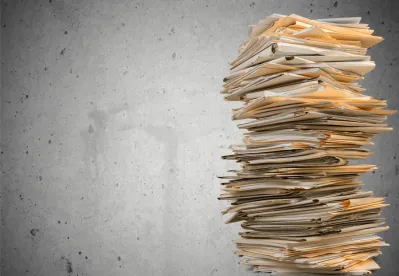The introduction of new and innovative communications and consumer electronics technologies typically requires years-long FCC proceedings to change service rules and technical requirements applicable to the use of radio spectrum, the products authorized to operate on these frequencies, and requirements surrounding the operation and use of new wired communications technologies. Section 7 of the Communications Act, a barely noticed and little used provision enacted in 1983, was intended to speed the deployment of these technologies, by allowing innovators to petition to the FCC to authorize new technologies and services, placing the burden on opponents of a new service or technology to show that it should not be authorized.
Now the Commission, as part of its effort to improve the process for enabling the introduction of new technologies and services, has kicked off a proceeding, some 35 years after enactment of Section 7, to adopt rules and guidelines that would allow technology innovators to ask the Commission to authorize new and innovative technologies, and would put in place a process by which these petitions would be acted upon on an expedited basis. The FCC’s new rules would cover petitions for rulemaking, waiver requests, and applications for authorization of any type of technology or service, radio-based or wired, with set procedures and timetables for action on Section 7 requests. Those involved in the technology space should pay close attention to the proceeding and the development of the ensuing rules, which may allow for the expedited launch of new products or services that might have otherwise taken years to clear regulatory hurdles.
The Section 7 Request
The FCC’s proposed rules are designed to ensure that any petition/application that includes a Section 7 request is evaluated under a consistent set of procedures. Under the new rules, a petitioner/applicant must expressly request consideration under Section 7 and include a detailed description of the proposed new technology/service and explain how the proposal differs from existing technologies/services. The request must include both qualitative and quantitative analyses showing the benefits of the proposal -- in FCC parlance, how it will serve the public interest. The proposal must also be technically feasible and commercially viable, not merely theoretical or speculative. Such a showing requires results from experimental testing, technical analysis, or research. The FCC will evaluate whether the proposal is new based on factors including whether the technology/service has previously been authorized, combines a previously-approved technology in new ways to improve performance or functionalities, or whether the new technology/service differs in essential respects from previously-approved technologies/services.
The FCC intends to evaluate whether a proposed technology/service is in the public interest based on a variety of factors, including whether the proposal would promote innovation and investment, provide new competitive choices to the public, provide new technologies that enable accessibility to people with disabilities, or meet public demand for new or significantly improved services in unserved and underserved areas.
Processing and Initial Assessment
The FCC proposes to require both the authorizing Bureau/Office and the Office of Engineering and Technology (OET) to review the filing and issue a Public Notice on the request. OET will be charged with assembling a staff team with relevant expertise, including a representative from any Bureau or Office with relevant subject matter expertise, to conduct an initial review of the request to determine if the Section 7 request is complete. The filing date of the Section 7 request, and initiation of the review period, will be deemed the date that the request is deemed complete as filed. The OET-led team is then required to determine and notify the petitioner/applicant within 90 days whether the proposed technology/service qualifies as sufficiently new to qualify for consideration under Section 7.
Should the OET-led team 90-day initial review conclude with a negative finding, the Commission itself will still have the option to determine that a particular proposal initially deemed ineligible merits Section 7 treatment. Thus, in response to an initial negative determination, parties would still have the opportunity to comment or request that the FCC reach a different conclusion, and proceed under the Section 7 rubric; undoubtedly a high bar, but one that would nonetheless still be available.
Any person who opposes a new technology/service has the burden to demonstrate that the proposal is inconsistent with the public interest. Importantly, it is not sufficient for someone to oppose a proposed technology or service merely because it might cause economic harm to its own service or disrupt a particular sector of the economy.
Significantly, for any proposal that receives a positive 90-day determination, i.e., the request qualifies for Section 7 treatment, the Commission proposes to commit the agency to swift action to evaluate that technology or service, and decide within one year of the filing date the appropriate course of action with respect to the petition or application.
Comments in the Proceeding
Comments on the NPRM are due 45 days after its publication in the Federal Register, which has yet to occur, and reply comments are due 30 days after the initial comment date. If you are a communications technology innovator with an interest in this proceeding, please let us know.




 />i
/>i

